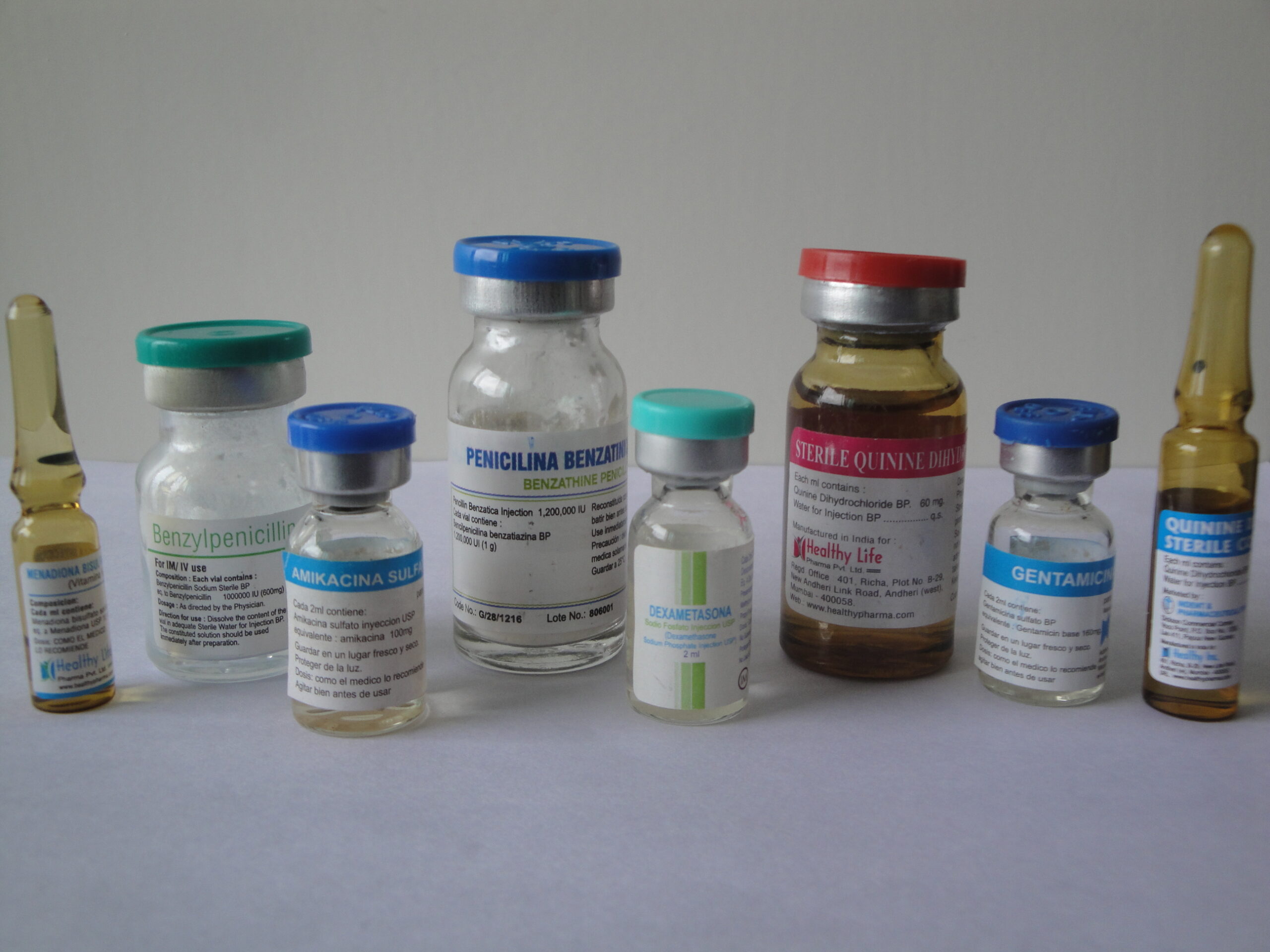Description
Atropine Sulphate veterinary injection
Atropine Sulphate VET INJ. 100 ML
Atropine Sulphate VET INJ. 10 ML
Atropine sulfate is a medication that is commonly used in veterinary medicine. It belongs to a class of drugs known as antimuscarinic agents and is primarily used to treat bradycardia (slow heart rate) and other conditions where an increase in heart rate is needed.
Here are some key points about atropine sulfate for veterinary use:
Indications: Atropine sulfate is often used in veterinary medicine to treat bradycardia associated with various conditions, such as anesthesia, organophosphate poisoning, or certain cardiac disorders.
Mechanism of Action: Atropine works by blocking the action of acetylcholine, a neurotransmitter, at muscarinic receptors. This results in an increase in heart rate (positive chronotropic effect) and other effects like bronchodilation.
Dosage and Administration: The dosage of atropine sulfate varies depending on the specific condition being treated and the animal’s size and species. It is typically administered by injection, either intravenously (IV) or intramuscularly (IM), under the supervision of a veterinarian.
Contraindications: Atropine sulfate should be used with caution in animals with certain pre-existing conditions, such as glaucoma or gastrointestinal obstruction. It is important to consult with a veterinarian to determine if atropine is appropriate for a specific case.
Side Effects: Common side effects of atropine sulfate may include increased heart rate, dry mouth, dilated pupils, and reduced gastrointestinal motility. Overdose can lead to more severe effects, including agitation, seizures, and cardiac arrhythmias.
Monitoring: Animals receiving atropine sulfate should be closely monitored for any adverse reactions or changes in heart rate. Dosages may need to be adjusted based on the individual response.
It’s crucial to note that the use of atropine sulfate should be carried out under the guidance of a veterinarian, who will determine the appropriate dosage and monitor the animal’s response to the medication. Self-administration or misuse of medications can lead to serious consequences. Always follow the veterinarian’s instructions and seek professional advice if you have any concerns about your pet’s health.
Atropine sulfate is commonly used in veterinary medicine for various purposes, primarily due to its antimuscarinic properties. Here are some common usages of atropine sulfate for veterinary injection:
Bradycardia (Slow Heart Rate): Atropine sulfate is often administered to animals to treat bradycardia, a condition characterized by a slower-than-normal heart rate. This can occur during anesthesia, as a result of certain medications, or due to other medical conditions.
Anesthesia Reversal: Atropine sulfate may be used as part of an anesthesia reversal protocol. Anesthesia can cause a decrease in heart rate, and atropine helps counteract this effect, promoting a more normal heart rate.
Organophosphate Poisoning: Atropine sulfate is commonly used in cases of organophosphate poisoning. Organophosphates are chemicals found in some insecticides, and poisoning can result in excessive stimulation of the parasympathetic nervous system, leading to bradycardia and other symptoms. Atropine helps counteract these effects.
Colic in Horses: Atropine sulfate may be used in horses to help manage colic, a term referring to abdominal pain. It can be used to reduce spasmodic activity in the gastrointestinal tract and alleviate pain associated with colic.
Ophthalmic Use: In some cases, atropine sulfate may be used in veterinary ophthalmology. It can be applied topically to the eye to induce pupil dilation (mydriasis) and reduce intraocular pressure.
Respiratory Conditions: Atropine sulfate may be used to treat respiratory conditions in animals by dilating the bronchi and reducing bronchospasm. This effect can be beneficial in cases of respiratory distress.
Salivary and Glandular Secretions: Atropine sulfate can be employed to reduce excessive salivary and glandular secretions, particularly during certain medical procedures or surgeries.
It’s important to note that the usage and dosage of atropine sulfate in veterinary medicine should be determined by a qualified veterinarian based on the specific needs and condition of the animal. Additionally, close monitoring for potential side effects is crucial when administering atropine sulfate, and veterinary supervision is essential to ensure the well-being of the animal.
Atropine sulfate is a medication commonly used in veterinary medicine for various purposes. Here are some of the primary uses of atropine sulfate for veterinary injection:
Treatment of Bradycardia: Atropine sulfate is often used to treat bradycardia (slow heart rate) in animals. This can occur during anesthesia, as a result of certain medications, or due to various medical conditions.
Antidote for Organophosphate Poisoning: Atropine sulfate is used as part of the treatment protocol for organophosphate poisoning in animals. Organophosphates are common insecticides and can cause overstimulation of the parasympathetic nervous system, leading to symptoms like excessive salivation, diarrhea, and bradycardia. Atropine sulfate helps counteract these effects by blocking the action of acetylcholine.
Pre-anesthetic Medication: Atropine sulfate may be administered prior to anesthesia to reduce the risk of bradycardia and to decrease salivation and respiratory secretions during surgical procedures.
Treatment of Certain Gastrointestinal Disorders: In some cases, atropine sulfate may be used to help manage gastrointestinal disorders in animals by reducing gastrointestinal motility and secretions.
Ophthalmic Procedures: Atropine sulfate may be used in veterinary ophthalmology to dilate the pupil and temporarily paralyze the ciliary muscle, facilitating examination of the eye or aiding in certain treatments.
Respiratory Disorders: Atropine sulfate may be used in the management of certain respiratory disorders, such as chronic obstructive pulmonary disease (COPD) in horses, by dilating the airways and reducing bronchial secretions.
Diagnostic Procedures: Atropine sulfate may be used in certain diagnostic procedures, such as bronchoscopy or endoscopy, to reduce salivation and respiratory secretions and facilitate visualization.
It’s important to note that the use of atropine sulfate should always be directed and supervised by a veterinarian. Dosage and administration will vary depending on the specific condition being treated, the species and size of the animal, and other factors. Administering medications without proper veterinary guidance can be dangerous and may lead to adverse effects.



